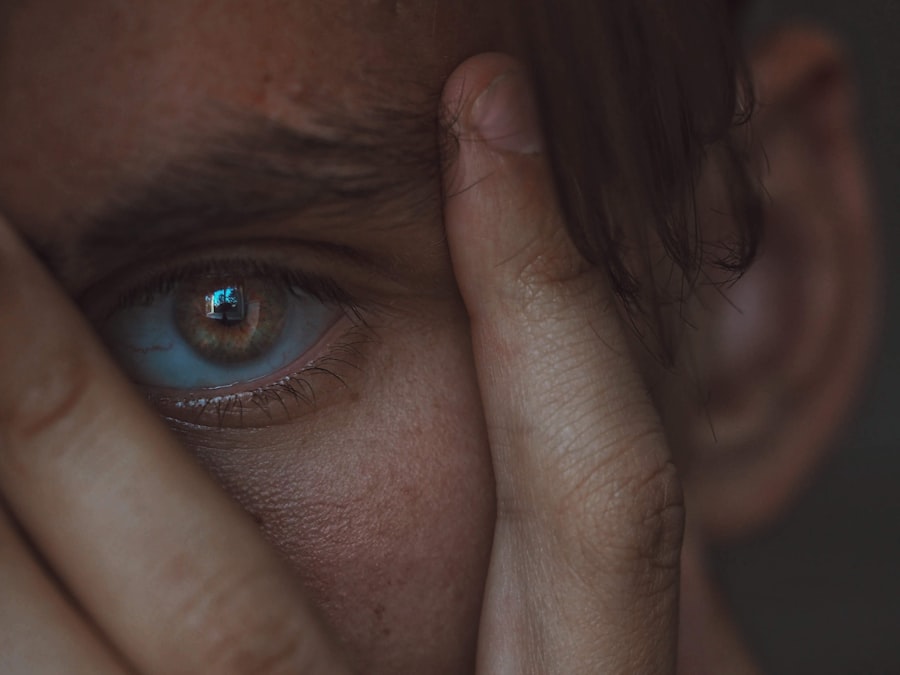Laser hair removal is a popular cosmetic procedure that utilizes concentrated beams of light to target and eliminate unwanted hair. As you consider this option, it’s essential to understand how the process works. The laser emits a specific wavelength of light that is absorbed by the pigment in the hair follicles.
This absorption generates heat, which damages the follicle and inhibits future hair growth. The procedure is most effective on individuals with light skin and dark hair, as the contrast allows the laser to target the hair more effectively. Before undergoing treatment, you will typically have a consultation with a qualified practitioner.
During this meeting, you can discuss your hair removal goals, medical history, and any concerns you may have. The practitioner will assess your skin type and hair color to determine the most suitable laser technology for your needs. It’s crucial to follow any pre-treatment instructions provided, such as avoiding sun exposure or certain medications that could increase sensitivity.
Understanding the science behind laser hair removal can help you feel more confident and informed as you embark on this journey.
Key Takeaways
- Laser hair removal targets hair follicles with concentrated light to inhibit future hair growth
- During treatment, expect a mild stinging sensation and the smell of singed hair
- Immediate post-treatment effects may include redness, swelling, and mild discomfort
- Long-term effects may include smoother, hair-free skin with reduced ingrown hairs
- To manage discomfort, apply aloe vera gel and avoid sun exposure for a few days after treatment
What to Expect During the Laser Hair Removal Treatment
When you arrive for your laser hair removal session, you can expect a professional and comfortable environment. The treatment area will be prepared, and you may be asked to wear protective eyewear to shield your eyes from the laser light. Depending on the size of the area being treated, the session can last anywhere from a few minutes to over an hour.
Your practitioner will use a handheld device to deliver the laser pulses to your skin, and you may feel a sensation similar to a rubber band snapping against your skin. Throughout the procedure, your practitioner will monitor your comfort level and adjust the laser settings as needed. Many modern lasers come equipped with cooling mechanisms to minimize discomfort during treatment.
While some individuals report feeling mild discomfort, others find the sensation quite tolerable. It’s important to communicate with your practitioner about any pain or discomfort you experience so they can make necessary adjustments. By understanding what to expect during the treatment, you can approach it with a sense of preparedness and ease.
Immediate Post-Treatment Effects on the Skin

After your laser hair removal session, it’s common to experience some immediate effects on your skin. You may notice redness, swelling, or a slight burning sensation in the treated area. These reactions are typically mild and should subside within a few hours to a couple of days.
Applying a cool compress can help alleviate any discomfort and reduce inflammation. It’s essential to avoid hot showers, saunas, or strenuous exercise for at least 24 hours post-treatment to allow your skin to recover. In some cases, you might also experience temporary changes in skin pigmentation, such as darkening or lightening of the treated area.
These effects are usually short-lived and will resolve as your skin heals. However, if you notice any unusual or prolonged reactions, it’s crucial to contact your practitioner for guidance. Being aware of these immediate post-treatment effects can help you manage your expectations and take appropriate steps for recovery.
Long-Term Effects on the Skin
| Long-Term Effects on the Skin | Details |
|---|---|
| Wrinkles | Increased appearance of fine lines and wrinkles |
| Sagging | Loss of skin elasticity leading to sagging skin |
| Age Spots | Dark spots or patches on the skin due to sun exposure |
| Uneven Skin Tone | Discoloration and uneven pigmentation |
| Dryness | Loss of moisture leading to dry and flaky skin |
As you continue with your laser hair removal treatments, you may begin to notice long-term effects on your skin. One of the most significant benefits is a reduction in hair growth over time. Many individuals experience permanent hair reduction after completing a series of sessions, leading to smoother skin and less frequent shaving or waxing.
Additionally, some people find that their skin texture improves as a result of reduced irritation from traditional hair removal methods. However, it’s important to note that results can vary based on individual factors such as hair type, skin type, and hormonal changes. While many enjoy lasting results, some may require maintenance sessions every few months or years to keep unwanted hair at bay.
Understanding these long-term effects can help you set realistic expectations and appreciate the benefits of laser hair removal as part of your skincare routine.
Managing and Minimizing Discomfort After Laser Hair Removal
Post-treatment discomfort is a common concern for those undergoing laser hair removal. While many find the procedure tolerable, it’s essential to have strategies in place for managing any discomfort that may arise afterward. Over-the-counter pain relievers like ibuprofen or acetaminophen can be effective in alleviating mild pain or swelling.
Always consult with your practitioner before taking any medication to ensure it’s appropriate for your situation. In addition to medication, applying soothing creams or gels containing aloe vera or hydrocortisone can help calm irritated skin. These products can provide relief from redness and inflammation while promoting healing.
It’s also advisable to avoid sun exposure during the healing process, as UV rays can exacerbate discomfort and lead to complications. By taking proactive steps to manage discomfort, you can enhance your overall experience with laser hair removal.
Caring for Your Skin After Laser Hair Removal

Proper skincare after laser hair removal is crucial for achieving optimal results and maintaining healthy skin. After treatment, it’s essential to keep the area clean and moisturized. Use a gentle cleanser free from harsh chemicals or fragrances to avoid irritating sensitive skin.
Following cleansing, apply a soothing moisturizer to keep the skin hydrated and promote healing. Sun protection is another vital aspect of post-treatment care. Your skin may be more sensitive to sunlight after laser hair removal, increasing the risk of sunburn or pigmentation changes.
Applying a broad-spectrum sunscreen with an SPF of 30 or higher is essential whenever you go outdoors. Reapply every two hours if you’re spending extended time in the sun. By prioritizing skincare after treatment, you can support your skin’s recovery and enhance the effectiveness of the procedure.
How to Maintain Smooth Skin After Laser Hair Removal
Once you’ve completed your laser hair removal sessions, maintaining smooth skin becomes a priority. While many individuals enjoy long-lasting results, some may still experience occasional regrowth of fine hairs. To keep your skin looking its best, consider incorporating gentle exfoliation into your skincare routine.
Exfoliating helps remove dead skin cells and can prevent ingrown hairs from forming. Additionally, regular moisturizing is key to maintaining soft and smooth skin. Look for products that contain hydrating ingredients like hyaluronic acid or glycerin to keep your skin supple.
If you notice any fine hairs returning, resist the urge to wax or pluck them; instead, consult with your practitioner about potential touch-up treatments or alternative methods for managing regrowth. By adopting these practices, you can enjoy the benefits of laser hair removal for an extended period.
Potential Risks and Complications to be Aware of
While laser hair removal is generally considered safe, it’s essential to be aware of potential risks and complications associated with the procedure. Some individuals may experience adverse reactions such as blistering, scarring, or changes in skin pigmentation. These risks are often minimized by choosing a qualified practitioner who uses appropriate techniques and equipment tailored to your skin type.
It’s also important to disclose any medical conditions or medications that could affect your treatment outcome during your initial consultation. Certain medications can increase sensitivity or interfere with healing, so being transparent with your practitioner is crucial for ensuring a safe experience. By understanding these potential risks and taking proactive measures, you can approach laser hair removal with confidence and peace of mind.
In conclusion, laser hair removal offers an effective solution for those seeking long-term hair reduction while promoting smoother skin.
Embracing this innovative technology can lead to lasting results and enhanced confidence in your appearance.
After laser hair removal, it is important to take care of your skin to ensure optimal results. One related article that provides helpful tips on post-treatment care is com/blog/’>this blog post from In Laser Hair Removal.
This article discusses the importance of moisturizing, avoiding sun exposure, and following any specific instructions given by your technician. By following these guidelines, you can maintain smooth, hair-free skin for longer periods of time.
FAQs
What is laser hair removal?
Laser hair removal is a cosmetic procedure that uses a concentrated beam of light (laser) to remove unwanted hair. The laser targets the pigment in the hair follicles, damaging them and inhibiting future hair growth.
What happens after laser hair removal?
After laser hair removal, you may experience some redness and swelling in the treated area. The hair may appear to be growing back, but it is often shedding as a result of the treatment. It is important to follow post-treatment care instructions provided by your technician to ensure the best results.
How long does it take to see results after laser hair removal?
Results from laser hair removal can vary, but most people will start to see a reduction in hair growth after the first session. It typically takes multiple sessions to achieve the desired results, as hair grows in different cycles and the laser is most effective on actively growing hairs.
Are there any side effects after laser hair removal?
Some common side effects of laser hair removal include redness, swelling, and temporary discomfort in the treated area. In rare cases, there may be changes in skin pigmentation or scarring. It is important to discuss any concerns with your technician before undergoing treatment.
How long do the results of laser hair removal last?
Laser hair removal can provide long-lasting results, with many people experiencing permanent hair reduction. However, some individuals may require occasional maintenance treatments to target any regrowth or new hair follicles that become active over time.
Can I shave or wax after laser hair removal?
It is generally recommended to avoid shaving or waxing the treated area between laser hair removal sessions. However, your technician may provide specific guidelines for your individual treatment plan. It is important to follow their instructions to ensure the best results.






